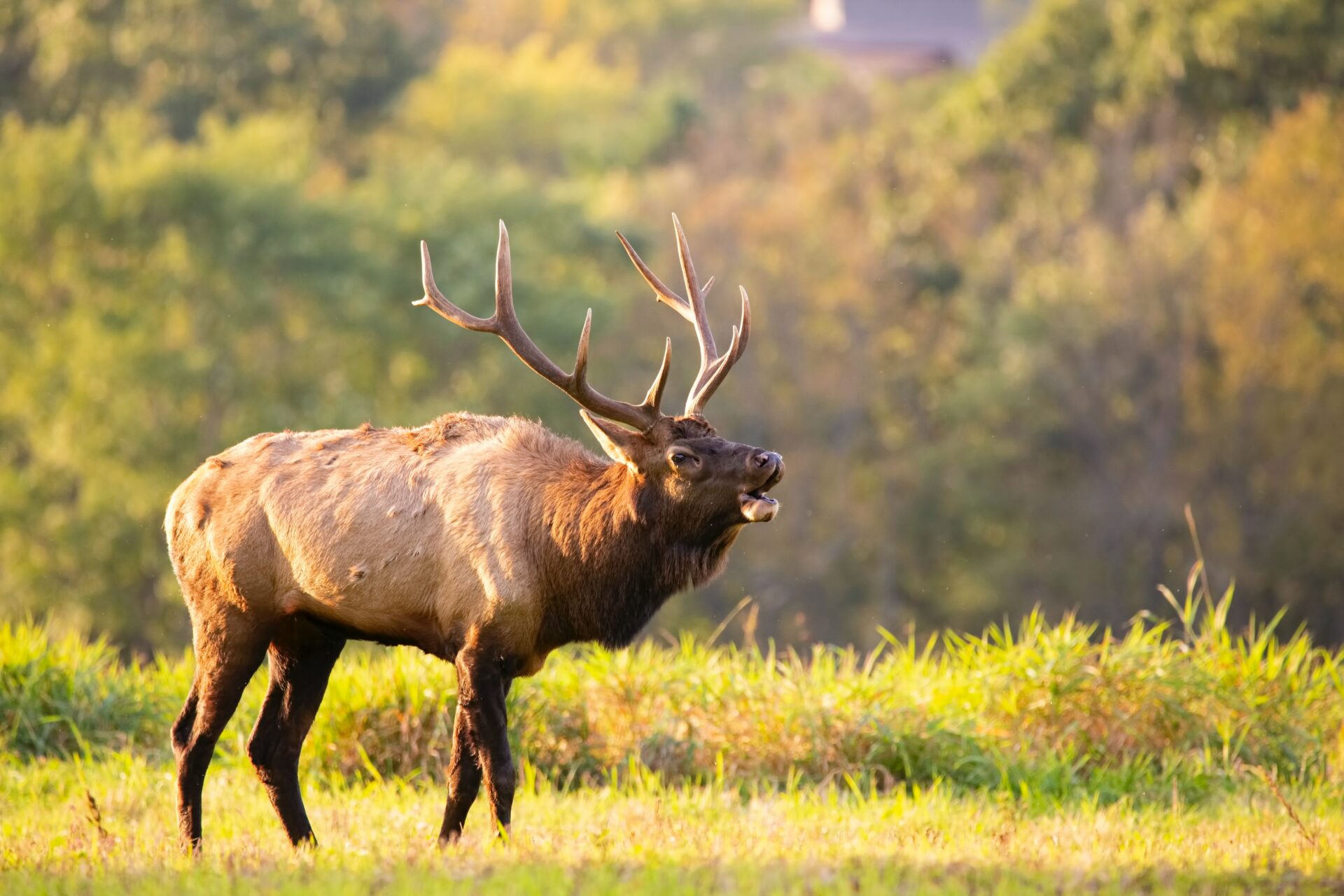In Southwestern Virginia, more specifically Buchanan, Dickenson, and Wise counties, there lives an animal that towers over most wildlife in the state in both grandeur and stature. Starting in September, during the rut, its voice fills the hollows and valleys of the Appalachian Plateau, and the echoes from its call can nearly be felt as much as they are heard. Atop the leveled mountaintops, a product of mining, this beast has inspired a specialized group of people, The Rocky Mountain Elk Foundation (RMEF), to restore an area of land once stamped by the mark of human interference. The species bringing so much change and attention to this secluded part of the state is the rocky mountain elk, or Cervus canadensis.
Extirpated in Virginia in the late 1800’s to early 1900’s, elk hold a mythical stigma, which can only be attained by a truly majestic animal. Thirty two years ago, across the country, in Libby, Montana, a group of four men realized the importance of elk, and began a conservation organization, which at the time, was a grassroots effort at best. The RMEF was founded by these four men: Bob Munson, Dan Bull, Bill Munson, and Charlie Decker. This group truly understood the value of elk to both their natural habitat, as well as the beauty and mystery their haunting bugles bring to the countryside.
Entirely different from when it first started, the RMEF is now one of the top conservation groups in North America.The organization has over 200,000 members and has helped restore over 6.7 million acres of land. Though the RMEF has restored a massive amount of land, they actually own none. Instead, they buy a tract of land, begin restoration, then sell the land back to the government so it can be used by the public. This method effectively cuts out the middle man, and reduces the amount of red tape to bypass, which in turn allows conservation efforts to start much earlier.
Already having successfully accomplished several elk restorations in the East, the RMEF has teamed up with biologists to find the most suitable habitat for elk in Virginia. Elk are extremely adaptable creatures, living in rainforests, dry desert valleys, alpine meadows, and in Virginia’s case, hardwood forests. According to Kathy Funk, Virginia State Chair for the RMEF, Southwestern Virginia is perfect elk habitat with its rugged terrain, small human population, and vast forests. This suitable habitat and careful planning set apart the Buchanan, Dickenson, and Wise elk restoration project from failed attempts at past elk restorations in Virginia, dating back to the early 1900’s. With a total of seventy two elk released in the Southwestern area of Virginia over a three year period, the herd is now at a self-sustainable size. This growth provides a glimpse at the promising future of Virginia elk. Due to their growing numbers, the Virginia Department of Game and Inland Fisheries is now working on the first ever Virginia elk management plan, which will likely be implemented once the herd reaches a population large enough for public hunting.
The prospect of elk roaming the mountains of Virginia like they did hundreds of years ago is fascinating. However, the work of the RMEF is much more significant than a singular species. The work of their volunteers has brought new life into an area of Virginia that was once an ecological disaster. Due to the massive amount of landscape and soil alteration, the ecosystem mining areas were degraded by invasive plant species, soil erosion, and exposed rock, each of these factors being equally destructive to the landscape. Thankfully, volunteers for the RMEF, as well as local landowners, teamed up to make a difference in the disturbed ecosystem, effectively restoring it to a healthy, habitable state. This restoration not only created a healthy environment for elk, but also for all native wildlife in Virginia.



